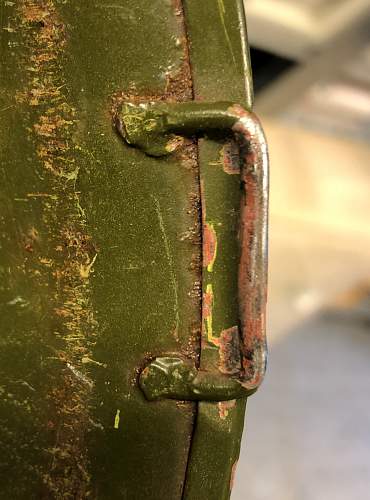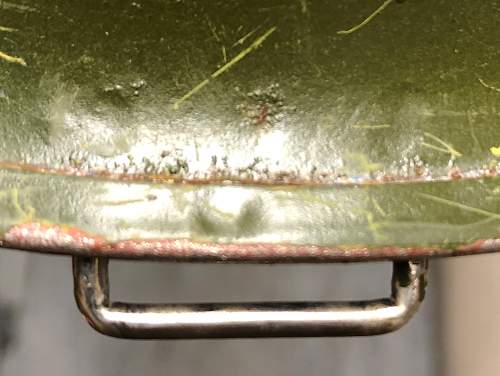Trying to find the McCord M1 shell transition ranges for fixed/movable loops, stainless steel/manganese rims and front/rear seam. Therefore, I compiled this little list. Based on shells I own or have owned, shells I have seen myself, and a good chunk of internet shells. There are many more internet shells of interest, but I only included ones that had enough images/right images to reasonable be sure of the data.
Now I figure there must be a relative narrow range for fixed/movable loops, in that I imagen a production line machinery change must be implanted. On the other hand rim material change, I imagen does not really require a machinery change and/or method change. Therefore, I figure a much large range. I would expect the same with the seam join as with the loops, a narrow range.
Reading Watertown Arsenal reports it is very clear that while there might be a general thread when lot numbers transition from one “version” to another, there must also be a number of shells that lay vastly outside this general thread. Reading example Watertown Arsenal reports 710/720 (January 1945) on ballistic test, they receive reduced draw finished shells (reduced draw shells are shells not drawn as deep as normal) in the range 400-500, 900-1000 and 1200-1300 in November 1944, from a request started in August 1944. Now the only way McCord can fulfill this request is to have shell disc laying around, already stamped, but not used yet. This alone opens up a whole new cane of worms – various shells thought of as retro fitted, repaired, straight up fake, might not be! They might in fact just be the odd lot number, the stack of stamped discs that lay way back on McCord’s plant, and just got used 6-24 month after arrival, thus receiving the newest accessories.
It seems that the change to manganese rims, and a tat bit later, rear seam joined rims, coincide with the beginning of edge-annealing on the shells. Edge annealing was done initial on the visor only but a little later on the whole edge of the shell. This was to combat delayed cracking, because of residual stress. Defects was of course expected, and 2.5% of all McCord helmets prior to may 1943, cracked after being delivered to the Army, on account of delayed residual stress. Initial edge annealing was done using a rapid heating and quenching cycle in a seam-welding machine. Later using a high frequency induction-heating unit developed by the Ohio Crankshaft Company.
Of the very first 200.000 McCord helmets drawn, 30% was defective after the draw. This was progressively decreased until it leveled out at 2%.
Number Loop Rim Seam 732 C Fixed SS Front 745 C Fixed SS Front 754 B Fixed SS Front 768 A Movable SS Front 787 C Movable SS Front 812 A Movable SS Front 830 B Movable SS Front 839 D Movable SS Front 858 C Movable SS Front 895 G Movable SS Front 900 C Movable SS Front 907 E Movable SS Front 926 K Movable SS Front 963 K Movable SS Front 982 A Movable Mang Front 987 G Movable SS Front 988 A Movable Mang Front 999 G Movable SS Front 1016 B Movable Mang Front 1016 C Movable Mang Front 1019 B Movable Mang Front 1022 J Movable SS Front 1023 G Movable Mang Front 1030 H Movable SS Rear 1047 A Movable Mang Front 1060 A Movable Mang Front 1086 F Movable Mang Front 1118 B Movable Mang Front 1163 C Movable Mang Front 1165 7 Movable SS Rear 1187 A Movable Mang Rear 1187 7 Movable Mang Rear 1195 D Movable Mang Rear 1205 H Movable Mang Rear 1227 B Movable Mang Rear 1235 F Movable Mang Rear 1284 A Movable Mang Rear
It would be nice if some of you who have McCord shells in the 750 range and 970-1200 range, could list their data.




 .
.











Bookmarks